Carretera Austral Part 10: Puyuhuapi - Chaitén
Originally posted to El Cantar de la Lluvia on Sunday, March 18, 2007
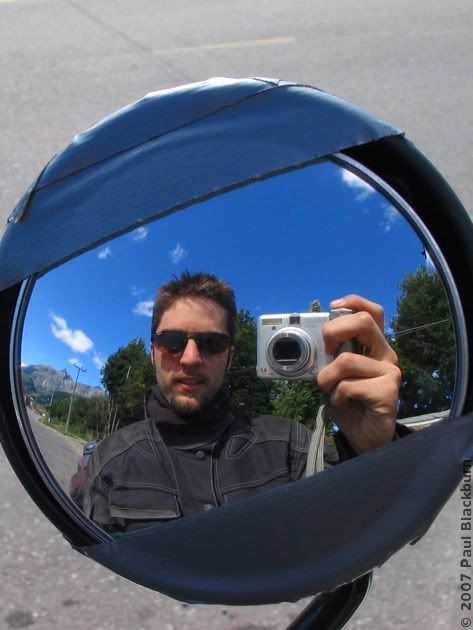
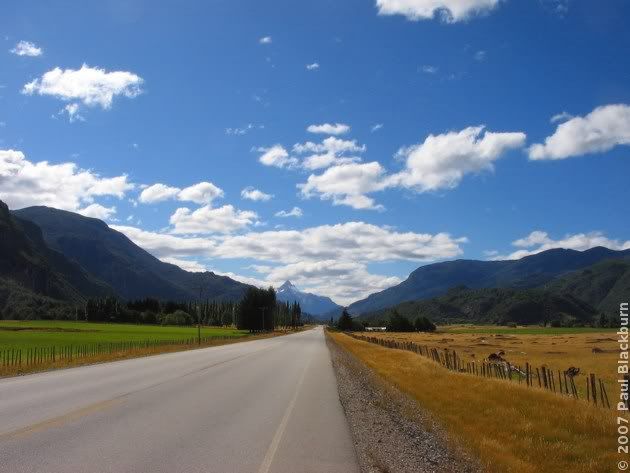
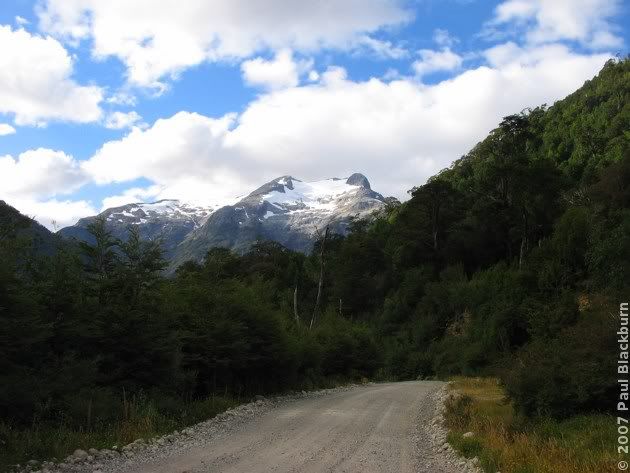
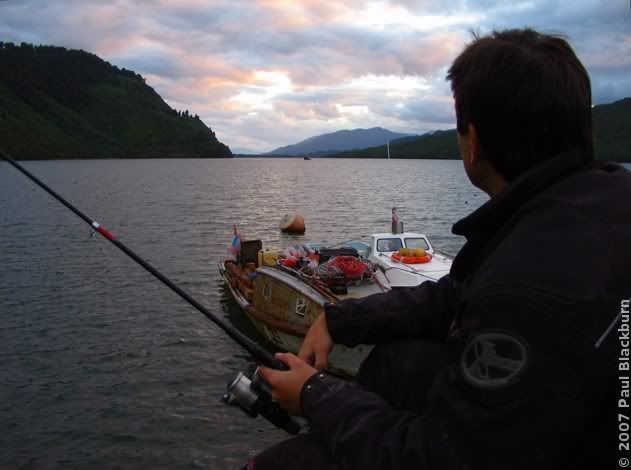
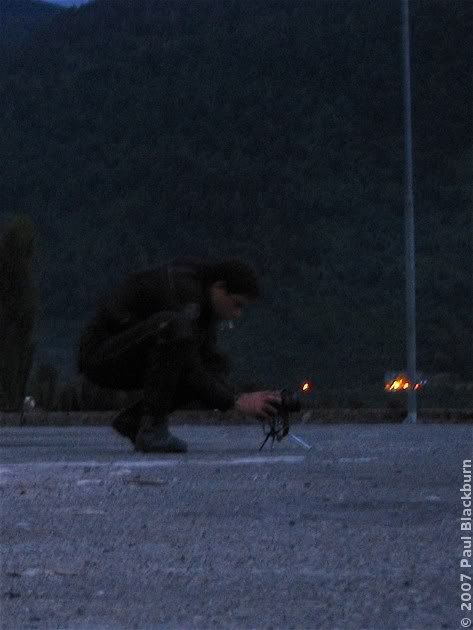
We were tired, so we made soup in the room, and went to bed early.

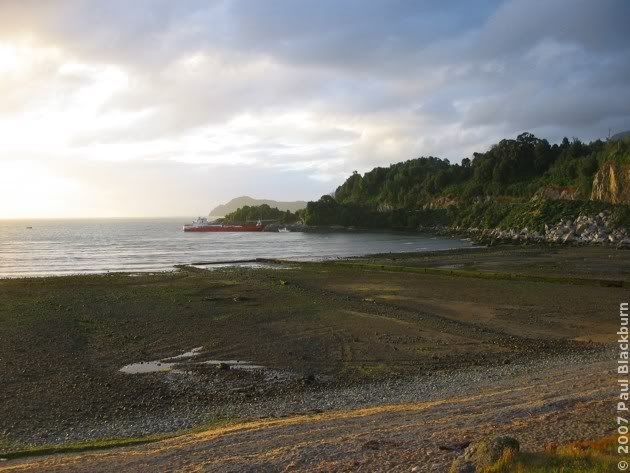
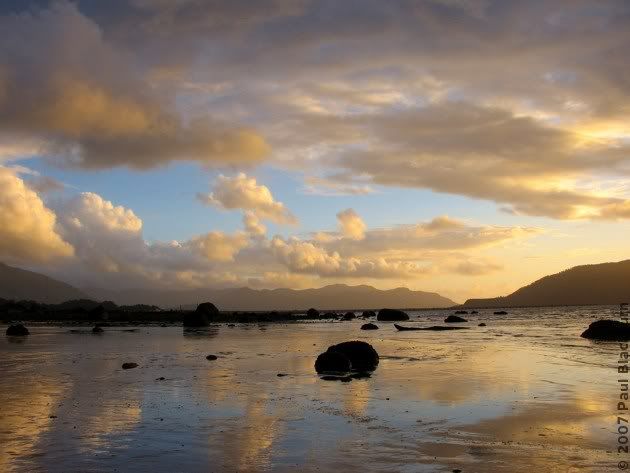
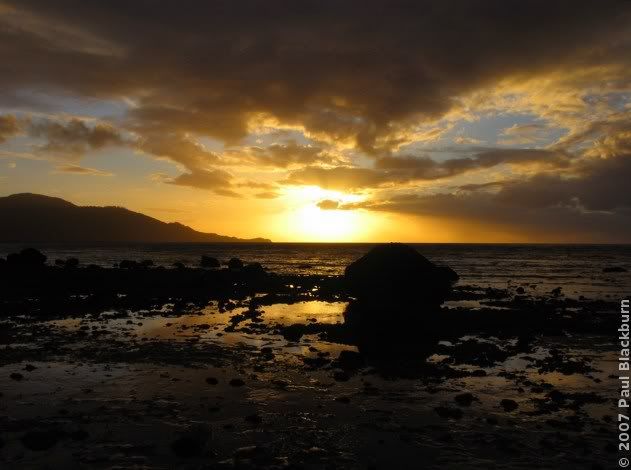
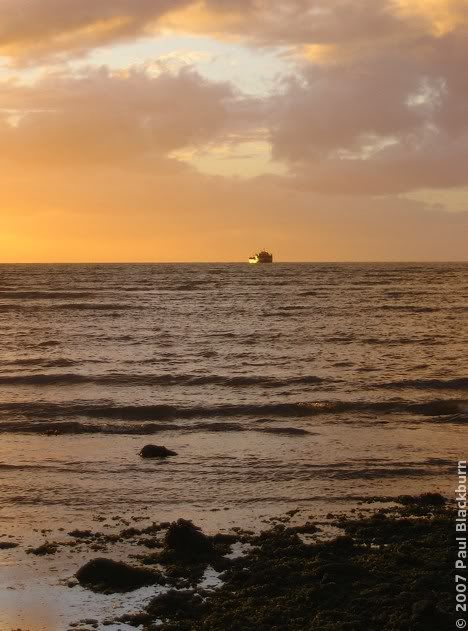
Looking back towards Chaitén from the beach.
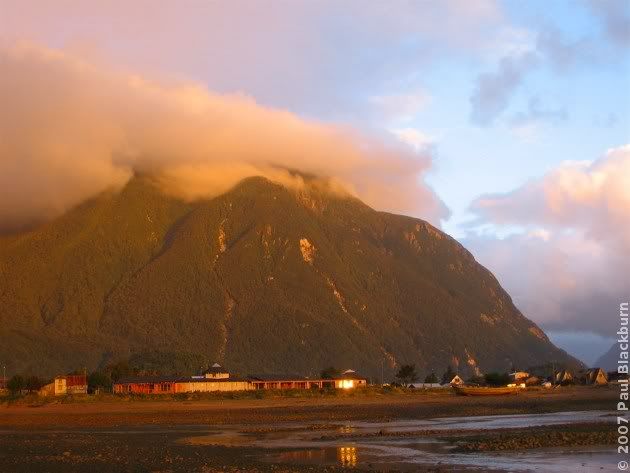
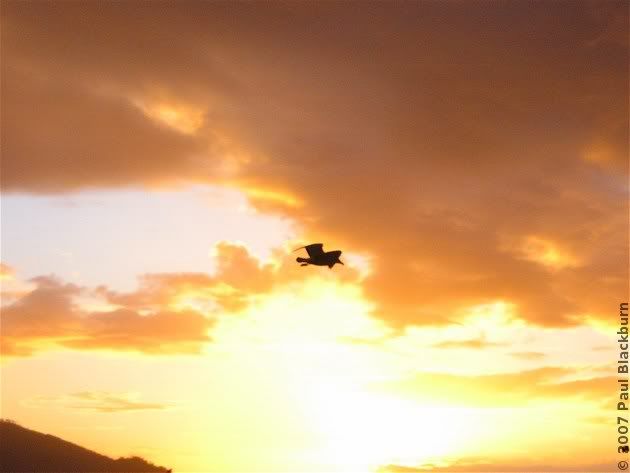
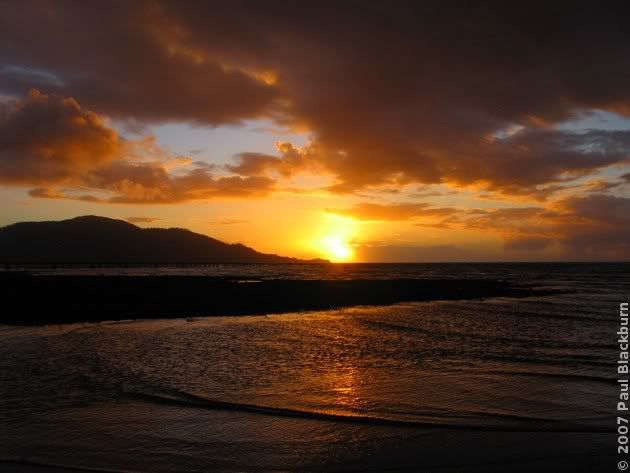
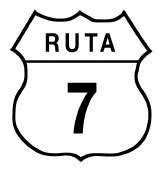 | Days 17-18: Coyhaique-Puyuhuapi, road to Chaitén. | 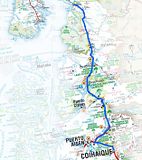 |
I awoke in a soft bed, almost too soft: an old camp bed, sunken in the middle. Last night, this crater had protected me from the cold, ensconced and safe. Now, in the early morning, it made my back hurt. I called Camilo from the depths of my nest, and we coordinated our day.
I discovered that I had lost the bolt that holds the exhaust to the frame, and that last night, when I had zippered up my saddlebag after putting the gear oil away, I had not locked the small padlock that kept it shut. Now, it probably lay open at the side of the damp road, somewhere between Puerto Murta and Villa Cerro Castillo.
I met with Camilo, James and Will. I needed a new bolt, and they needed a few things from Homecenter. For lunch, we went to the Casino de Bomberos, the Fireman's Canteen, the same place we had gone with Tom on the way down. The same woman, the same foul service, but good food. Frankly, if tomorrow the government were overthrown by a dictator whose sole fancy were to deport chilean waiters and waitresses, and import their argentine equivalents, I would not be opposed.
After much wandering, I found a bolt shop on the corner of the same block the residencial was on, bought one, and went back to install it. In the small car park under the main house I met an American man from Montana. He'd been fishing, I think the name of the river was that of some king. He'd caught a very large female salmon. He spoke almost no Spanish, and the residencial's owner, a retired Army officer who took pride in his knowledge of local fishing areas and the full service he offered his fishing guests, spoke no English.
As the American did all necessary things to the salmon, leaving a literal bloody mess on the small area of the garage floor that was not cemented over, another guest arrived. He took one look at the salmon, asked where it had been caught, and sentenced: "No, in this season the meat is bad. Bad. It's not worth fishing them," and pottered off again.
When the owner was some distance away, the American asked me what the guy had said. I told him. He remained silent a while, still working on the fish. As he removed the guts, he began telling me about the salmon's life cycle, how fresh water is the bitter end for salt water fish. "The begin falling to pieces as they swim upstream to spawn. Literally, bits of flesh fall off them". He pointed at the spine. "See this? The skin changes colour when they've been in fresh water too long. And this one is fine."
I set to work on my bolt. I didn't want to lose it again, so I decided to file a notch into the head and wire it to the frame. I asked the American guy for a file. We went to fetch it from his pickup, parked outside. I opened the sliding garage door for him, since both hands were covered in blood and gore, and one held a very large knife. On our short walk back to the residencial I did my best to hold the multitool in the most menacing way I could manage. A young couple walked past us, but didn't seem fazed. I guess this is a common sight in Coyhaique.
I had been filing and wiring for a while, when a new guest arrived, a Swiss cyclist. We chatted a while. I was surprised at his bicycle: it had no front suspension. The seat was a rather austere hard leather affair, rimmed by brass rivets. I think he hoped to attain spiritual purification through testicular sacrifice.
That night the five of us went out for pizza, and we watched how Ricky Martin gave some morena a few good dry humps on live TV at the Festival de Viña.
Camilo and I set off the next morning, after a long and frustrating search for his motorbike's keys, which eventually turned up in one of the rubbish bags that kept his luggage safe from rain.

At the petrol station we saw two loaded Africa Twins, and I went over to say hi. It was Tom and Christine, who were touring South America. It so happened that they too knew Karl Heinz.
A final stop by the D'Olbek brewery to buy another glass, to replace the one that had broken in Río Tranquilo. Tom had asked Camilo for this favour, and as we fruitlessly attempted to find somewhere to put it where it wouldn't break or fall out, Camilo and I cursed the fucking gringo till we were breathless. I finally gave in and accepted to carry it in one of my saddlebags.
In Villa Mañihuales we refueled and had lunch in Yuseff's restaurant. Tom and Christine were at the other table, but since we hadn't talked much at the petrol station, we didn't interact much. Camilo's salmon was served half-raw. "Just imagine it's sashimi" I said.

Bit by bit we neared the Parque Nacional Queulat, and the vegetation started to change.

Here, a few kilometres from Puyuhuapi.
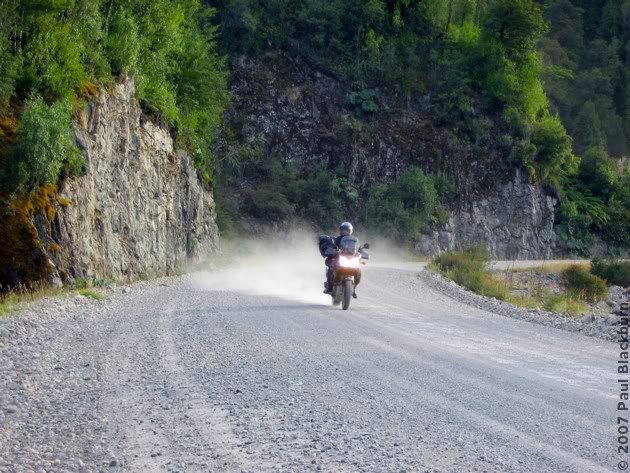

Camilo had bought a portable fishing rod, and was eager to try it out. I walked with him to the dock, and confirmed once more that fishing is not for me. To tell the truth, I am not sure why they call it "fishing", since that is what you spend the least time doing. It should be called "attempted fishing", or perhaps "hoping for a bite" or "I am the archetypal optimist".

Obviously nothing was biting. We were told about another dock, near the mouth of a river, just outside Puyuhuapi. Camilo took the bike, and I walked along the shore.
And there, Camilo caught a fish and was happy.
No, I made that up. He didn't catch anything. Instead, he put the rod away and took some pics.

During the night I woke several times to the noise of rain showering against the window, and the howling gusts of wind.
The next morning it was still raining. That meant packing in the rain. There are few things more unpleasant than that. And later on, I'd find out what one of those few things was.
An hour and a half later, both of us taught and squeaky in our chicken suits, Camilo with his yellow kitchen gloves on, we set off.
By the time we reached La Junta, my hands were soaked, and it was cold. To make matters worse, the anti-fog visor insert had moved slightly, allowing condensation to form behind it.
I discovered, to my boundless joy, that some italian hijo de puta working as a helmet designer at Nolan, in Italy, had the bright idea of having the visor de-fogging air intake pointing upwards, so that it not only served as an air intake, but also as a rain intake. Rain was quite efficiently collected, channeled to the inside of the helmet, leaked out onto the inside of the chin flap, and sent trickling down my neck.
At La Junta I just wanted to take off my helmet and gloves, and perhaps sit down to eat something, perhaps with a hot coffee to wash it down. I once again pushed the remarkable supermarket's door aside, and headed towards a place with eight plastic chairs set against the wall, beside which stood an elderly caucasian woman, two small backpacks on two of the chairs. "Are these chairs taken?" I asked, placing my helmet on the one furthest from her. "Yes" was her short and dry answer. "All chairs are occupied then?" I asked, with a slowness that carried over every ounce of my displeasure. "Yes". Vieja del orto. I plodded off, swearing, to find a supermaket trolley in which to leave my helmet in a position that would help it drain.
After a lunch composed primarily of coffee and cookies, we mounted and continued on our way to Chaitén.
From out of nowhere a pudú came dashing out of the nalcas on the side of the road, missed Camilo's front wheel by mere centimetres, and disappeared on the other side.
Further on we came across roadwork. The Carretera Austral was being widened here; we weren't that far off from Chaitén. I nearly put the bike down twice due to the soft, recently-churned earth, but managed to keep it up.
In Chaitén Camilo spotted the English lad's bikes, so we checked in to the same place (which, by the way, was absolutely fantastic; unfortunately as a means of identifying it I can only say that the hospedaje itself was behind another house, though the sign was out front).
We went for a walk by the beach.

Camilo and the lads went back; I walked down to the beach.
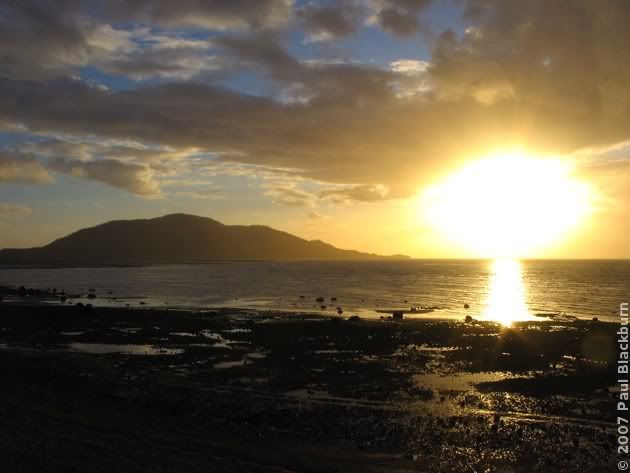

That is the ferry that would take us to Quellón, at the southern tip of the big island of Chiloé, the next day.

It had been a while since I had seen a sunset quite like this one.

No need to describe it. You can imagine how it must have felt.

Nope, nothing I can say about it. These pics show it as it was.




In a certain sense, this would be the end of one of the chapters of our journey. The following day we would be in Chiloé, and that same day we would end up sleeping on the continent once more. We would leave behind the tall mountains covered in dense and damp vegetation, the glaciers casually spilling over mountaintops here and there, the incredible colours of the rivers (do not adjust your monitor, this is the Río Baker), and the kilometres and kilometres of dirt roads.
I couldn't help feeling slightly nostalgic.
Labels: carreteraaustral, rides, trips

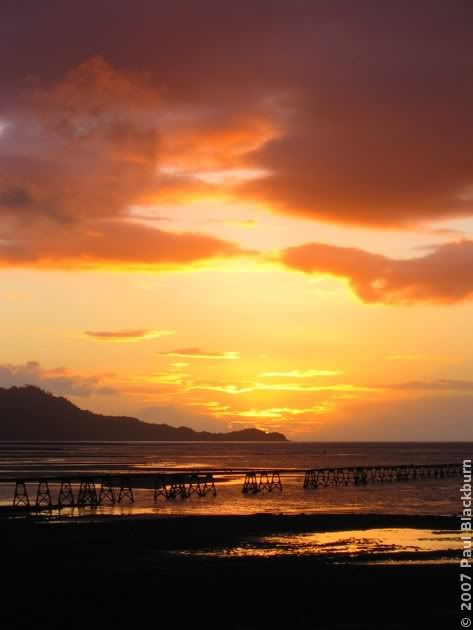
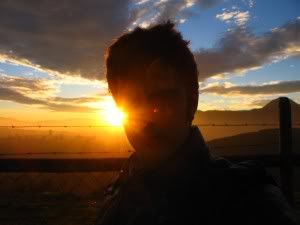
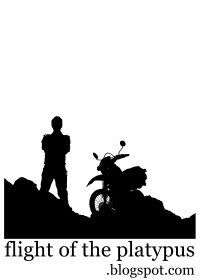

 The Lagoons of the Santuario de la Naturaleza 2: Laguna Los Ángeles
The Lagoons of the Santuario de la Naturaleza 2: Laguna Los Ángeles Race Day At Leyda 4
Race Day At Leyda 4 El Tabo and the Central Hidroeléctrica El Sauce
El Tabo and the Central Hidroeléctrica El Sauce Exploring The Hills Around Lampa
Exploring The Hills Around Lampa A Different Route To Baños De Colina
A Different Route To Baños De Colina The Mines of the Cuesta La Dormida
The Mines of the Cuesta La Dormida The Frozen Lagoons of the Santuario de la Naturaleza
The Frozen Lagoons of the Santuario de la Naturaleza Second Mass Demonstration "For A Fair Tag"
Second Mass Demonstration "For A Fair Tag" First Mass Demonstration Against The 'Tag'
First Mass Demonstration Against The 'Tag' Enduro In Lagunillas
Enduro In Lagunillas Embalse El Yeso and Termas Del Plomo
Embalse El Yeso and Termas Del Plomo Ride To Peñuelas
Ride To Peñuelas Cerro Chena
Cerro Chena Race Day at Leyda 3
Race Day at Leyda 3 Baños de Colina 2
Baños de Colina 2 Carretera Austral: Epilogue
Carretera Austral: Epilogue The Little Giant and Termas del Plomo
The Little Giant and Termas del Plomo Back on Two Wheels
Back on Two Wheels 2006 Photographic Retrospective
2006 Photographic Retrospective Race Day At Leyda 2
Race Day At Leyda 2  Quantum Optics III in Pucón
Quantum Optics III in Pucón Meseta In Chicureo
Meseta In Chicureo Pick Up Your Beer Bottle And Fuck Off
Pick Up Your Beer Bottle And Fuck Off  Planes And Hills
Planes And Hills Cut-Off Road
Cut-Off Road Lagunillas
Lagunillas Laguna Verde 2
Laguna Verde 2 Ride To Anywhere But Aculeo
Ride To Anywhere But Aculeo Cerro El Roble, Second Attempt
Cerro El Roble, Second Attempt Baños De Colina
Baños De Colina Some Walk On Water...
Some Walk On Water... Race Day At Leyda
Race Day At Leyda Almost Cerro El Roble
Almost Cerro El Roble Off To Curacaví with Andrés
Off To Curacaví with Andrés La Serena, Part 3: Back To Santiago
La Serena, Part 3: Back To Santiago  A Bull, Two Cows and a Chilean Fox
A Bull, Two Cows and a Chilean Fox Escape To Cuesta La Dormida
Escape To Cuesta La Dormida Valve Adjustment
Valve Adjustment La Serena, Part 2B: Valle Del Elqui
La Serena, Part 2B: Valle Del Elqui La Serena, Part 2A: Coquimbo and La Recova
La Serena, Part 2A: Coquimbo and La Recova Mud And Pine Trees
Mud And Pine Trees La Serena, Part 1
La Serena, Part 1 Pimp My Exhaust
Pimp My Exhaust Ride To Laguna Verde
Ride To Laguna Verde Ride To La Mina
Ride To La Mina Ride To Termas El Plomo
Ride To Termas El Plomo Camping in Colliguay
Camping in Colliguay Ride To Portillo
Ride To Portillo Ride To Olmué and Con Con
Ride To Olmué and Con Con Siete Tazas
Siete Tazas Watching The Departure Of The Day That Brought Me Here
Watching The Departure Of The Day That Brought Me Here Buenos Aires Motorbikes
Buenos Aires Motorbikes Ride to Talca with the Adach Group
Ride to Talca with the Adach Group Las Trancas '05
Las Trancas '05 Towers and Hills
Towers and Hills María Pinto, Melipilla, Aculeo
María Pinto, Melipilla, Aculeo Me and my Carb
Me and my Carb




0 Comments:
Post a Comment
<< Home